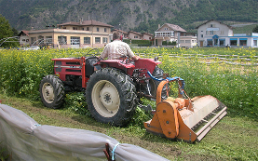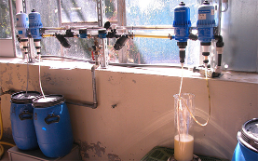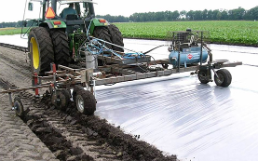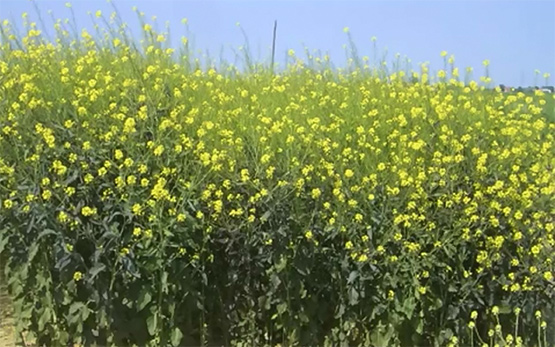Biofumigation

Plant species (e.g. mustard species), contain specific metabolites which are transformed during the degradation of the plants into toxic, volatile molecules. Once incorporated into the soil these molecules kill pathogens, parasites and weed seeds in the surrounding soil.
Biofumigation – Practical Information, Advantages & Disadvantages |
Video | Fact sheet (PDF, 903 kB, 07.05.2020) |
Mustard seedmeal fertilizers

After the oil extraction, the seedmeal of mustard species contains glucosinolates, which are transformed into toxic, volatile isothiocyanates after the addition of water. Therefore, mustard seed-meal containing fertilizers liberate after their incorporation in the soil not only nutrients (mainly N) but also kill pathogens, parasites and weed seeds in the soil.
Anaerobic soil disinfestation (ASD)

The soil is covered with an airtight plastic film after the incorporation of big amounts of easily degradable organic matter. The decomposition of the organic matter by the soil microorganisms creates anaerobic conditions and the toxic substances (organic acids) are formed. Consequently, pathogens and parasites are killed.
ASD – Practical Information |
Video | Fact sheet (PDF, 497 kB, 07.05.2020) |
ASD - Advantages & Disadvantages |
Video | Fact sheet (PDF, 435 kB, 07.05.2020) |
Video

Publications





